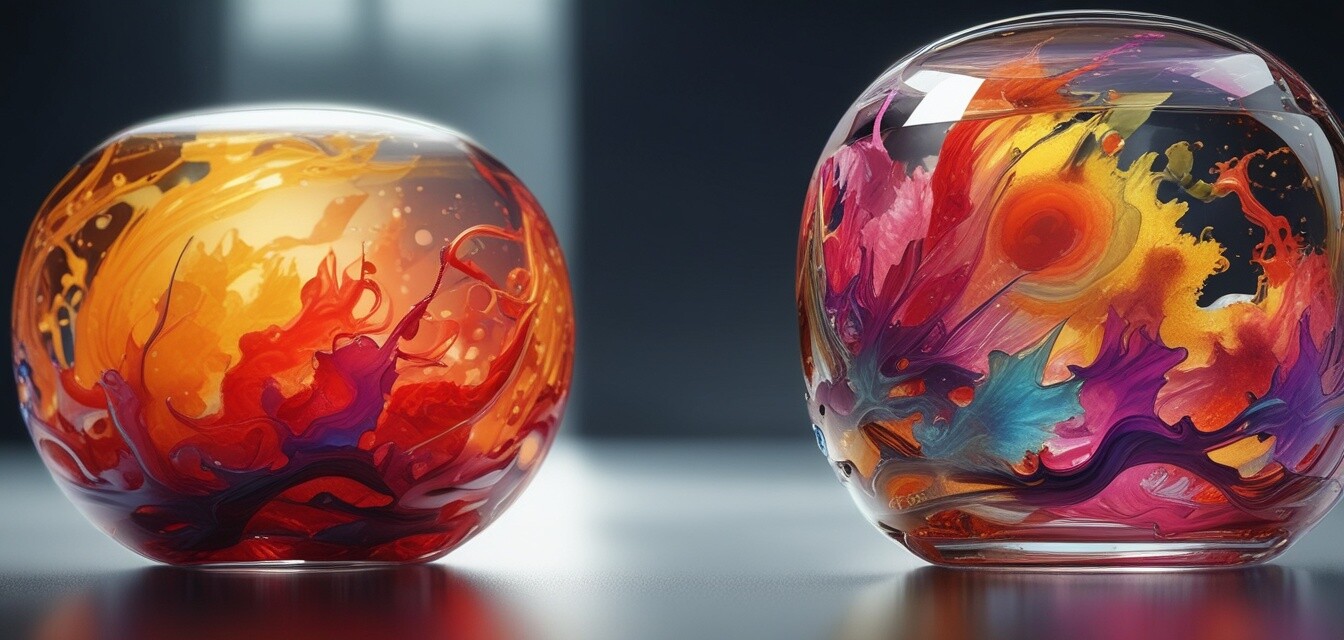
Exploring Reflected Light: Pickup Tips for Glass Artists
Key Takeaways
- Understanding how light interacts with glass enhances artistic expression.
- Choosing the right colors and textures can amplify reflections.
- Techniques such as layering and placement can create dramatic effects.
- Experimenting with different lighting setups leads to unique artistic outcomes.
- Utilizing reflected light can elevate your glass art to a professional level.
As a glass artist, leveraging the beauty of light is pivotal to enhancing your creations. Reflected light can create stunning visual effects, adding depth and dimension to your work. Whether you're creating a simple glass piece or an intricate design, understanding how to use reflected light effectively can open up a whole new level of artistic expression.
Understanding reflected light
Reflected light occurs when light bounces off surfaces, creating highlights, shadows, and varied colors. When it comes to glass, this phenomenon can be particularly intriguing as glass’s transparent qualities allow it to interact with light in unique ways. Here are a few key concepts to keep in mind:
- Refractive Index: Different types of glass have varying refractive indices, affecting how light passes through and reflects off them.
- Surface Texture: The finish of your glass, whether smooth or textured, dramatically influences light reflections.
- Color: Transparent, translucent, and opaque colors will reflect light differently, playing a crucial role in your design.
Choosing the right materials
To make the most of reflected light in your glass art projects, consider the materials you choose. Below is a comparison table showcasing how different types of glass materials impact light reflection:
| Type of Glass | Texture | Light Reflection | Best Uses |
|---|---|---|---|
| Clear Glass | Smooth | High reflection with clear light transmission | Functional pieces, open designs |
| Frosted Glass | Matte | Soft reflection with diffused light | Privacy pieces, soft aesthetic designs |
| Colored Glass | Variable | Reflection varies by color and transparency | Decorative pieces, artistic installations |
| Textured Glass | Rough | Diffused reflection; dramatic light effects | Art pieces that require depth |
Techniques for enhancing reflected light
Here are some effective techniques to enhance reflected light in your glass projects:
- Layering: Use multiple layers of glass to create depth. The reflections between each layer can produce extraordinary effects.
- Placement: Experiment with different angles and placements in relation to your light source to discover optimal reflections.
- Mixing Textures: Combine various textures within your piece for contrasting light reflections that guide the eye.
- Adding Accessories: Use light fixtures or colored lighting to dramatically alter the appearance of your glass.
Lighting your glass art
Choosing the right lighting is integral to showcasing your glass art effectively. Here are some popular lighting setups:
| Lighting Type | Description | Effect on Glass |
|---|---|---|
| Natural Light | Utilizing sunlight or daylight for optimal visibility. | Brings out the vibrancy and true colors of glass. |
| Spotlight | Focused light on a specific area of your artwork. | Dramatic highlights; great for enhancing textures. |
| Backlight | Illuminating your piece from behind. | Creates glowing effects and emphasizes transparency. |
| Colored Lights | Using filters or colored bulbs. | Adds a new dimension by altering the colors reflected. |
By experimenting with these lighting techniques and materials, you can create stunning pieces that capture attention and inspire. To dive deeper into various glass-making techniques, feel free to explore our [Glass Sheets and Supplies](/products/glass-sheets-and-supplies) page to find the perfect materials for your next project.
Conclusion
Using reflected light effectively can transform your glass art, making it more captivating and visually intricate. With an understanding of materials, shared techniques, and optimal lighting, you can enhance your artworks and captivate your audience. Keep experimenting with reflected light to discover new effects and take your glass art to new heights!
Tips for beginners
- Start with clear glass to understand light behaviors before moving to colored or textured choices.
- Experiment with different angles of light to see how they affect your glass pieces.
- Keep a notebook of your techniques and light setups for future reference.
- Don’t shy away from using unconventional light sources to see unique results.

